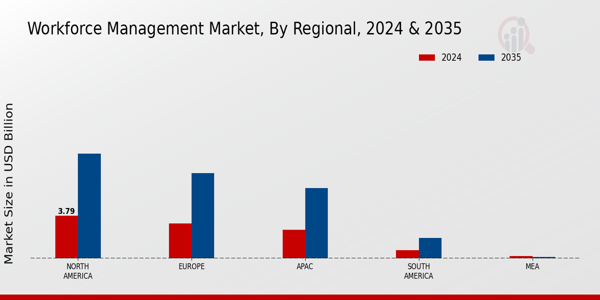Market Trends
Key Emerging Trends in the Workforce Management Market
Human resource management is being highly influenced and changed by the recent trends in the market. The newest trend that we are observing is improving the usage of workforce solutions based on cloud systems. Cloud based platform provide a better scalability medium to companies, also it's easy to access and less costly; Because of this many companies prefer the cloud based platforms. Shifting to cloud-based solutions allows the workers to be managed and equipped in a way that benefits both the worker and employer, irrespective of locations New trends in workforce management are the use of artificial intelligence (AI) and machine learning (ML). Technologies are very informative in providing a greater workflow, planned tasks, and modernizing repeated processes. Artificial Intelligence powered tools aids companies by helping them forecast the needs of future human resources, improve overall departments and make choices led by data not intuition. This efficient approach of enhancing operational ability is important in a way that allows the business to flexibly respond to any dynamic changing and bring more innovative methods. Nowadays, employee's expertise is becoming more impactful which will redefine many labor trends. The companies wish to have high levels of productivity, and retain their employees for a longer time so they are preferring work environments that are safe. There is an increasing focus on staff's mental health which leads to better solutions in workplace management like work from home feature and flexible timings. This trend is aligning the new and evolving expectations of employees who are slowly shifting to hybrid work models. Modern way of working (gig economy) is playing a huge role in workforce mobilty and how they are managed. As the trend of freelance and part-time work grows, companies are altering their own strategies to harness such talent. The latest workforce management solutions allow gig workers to integrate better and manage quickly within the existing system efficiently. This can also be seen in workforce management standards that there is a continued attempt to incorporate diversity within the work teams. To attain long term goals, employers have acknowledged the importance of diversity and inclusivity within their workspace by fostering sensitive workplace management solutions. It helps in the fair hiring of employees from various cultures and tracking how well several initiatives are functioning.














Leave a Comment